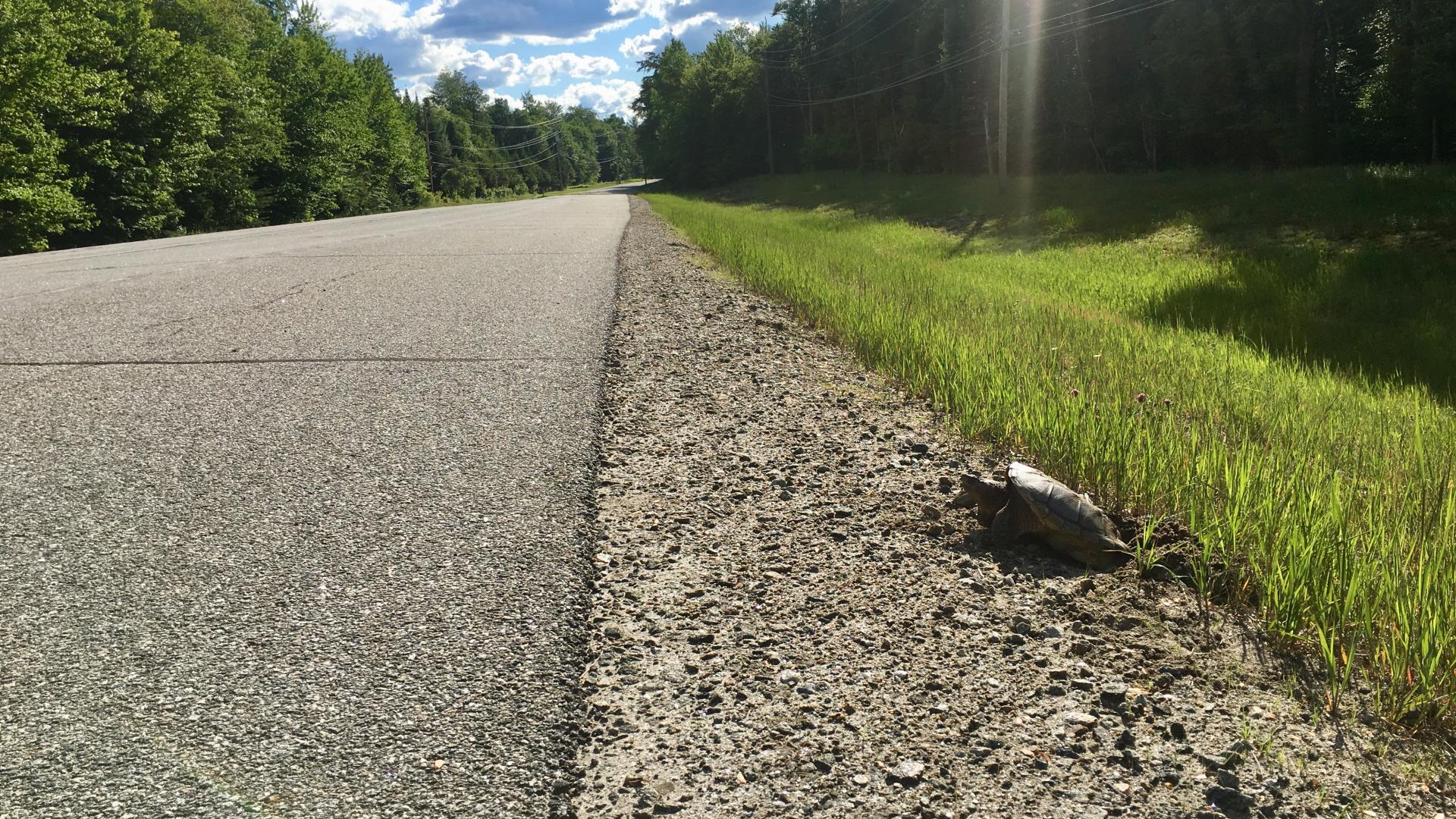Submitted by guest blogger, Tim Rowland.
Four species of turtle call the Adirondacks their home — Blanding's, wood, snapping, and painted. As you cruise the Adirondack Coast this early summer, you are apt to spot them in or near the road particularly near lakes, ponds, and streams. They can often be found hanging out at the Wickham Marsh Wildlife Area, on the shores of Lake Champlain, and along the banks of the Ausable River.
Late spring and early summer is the breeding and egg laying season for our reptilian friends. They merely want a safe place to build a nest, lay their eggs, and get on with life. Our blogger shares some of his experiences with Adirondack turtles and offers some tips on protecting them:
Driving on a lonely byway along the AuSable River in May, we encountered a car off the shoulder with its flashers burning, and a woman in the middle of the road waving what appeared to be a lawn rake. Were we startled? We were not. We immediately recognized the behavior of a sister in arms. For we are the few, the proud, the people who — no matter how late we are for a critical meeting with our best client — will come to an immediate halt when we discern that there is a turtle in the middle of the road in need of assistance.
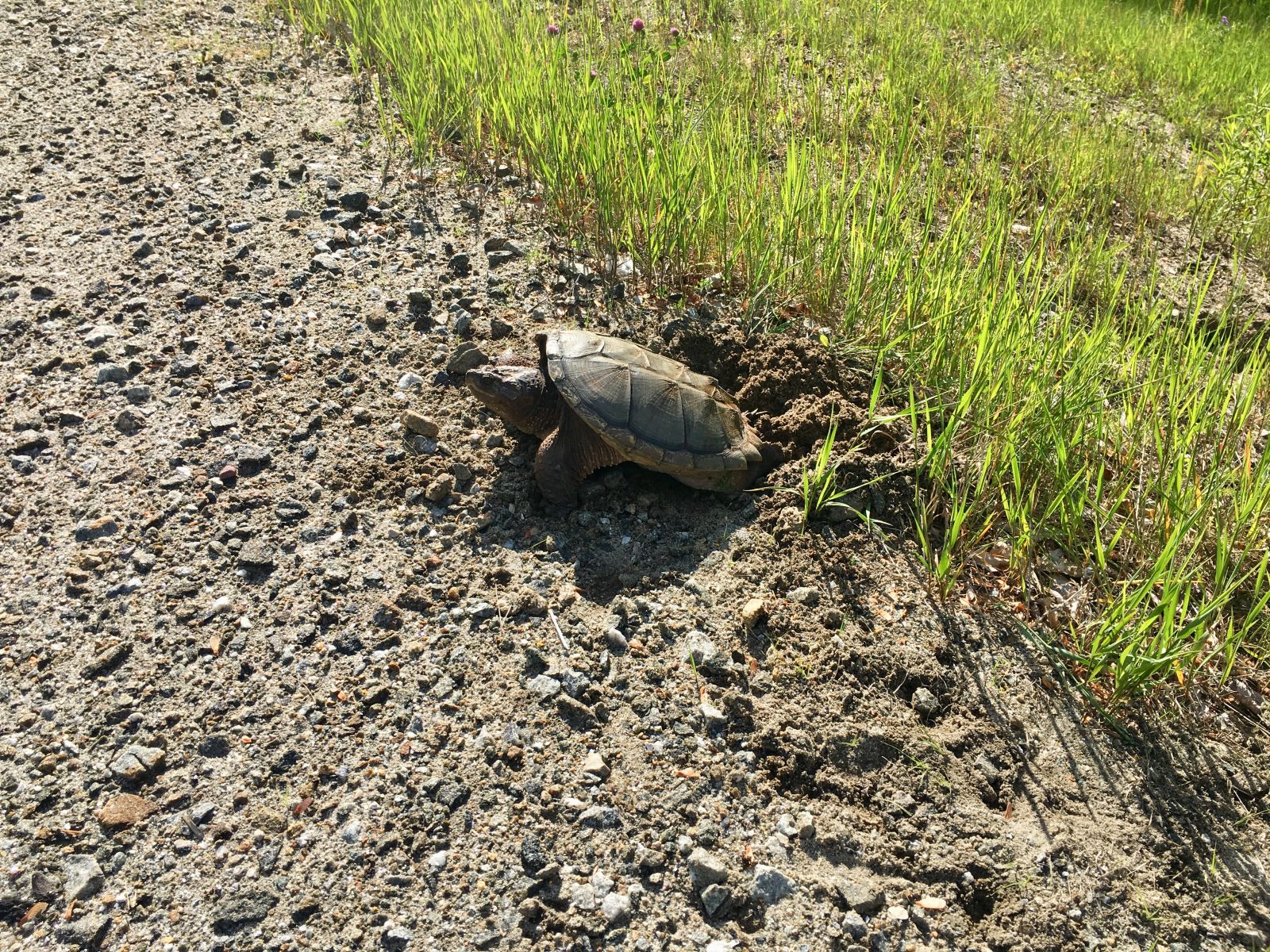
This is the time of year that turtles really need our help. They are laying eggs, and often on the move seeking the proper habitat. Female turtles don’t lay until they are 10, and only lay one small clutch a year. According to the Adirondack Council, there are 11 species of land turtle in New York, and unfortunately they are at risk.
The council urges drivers to do their best to avoid turtles or, where practical — and this is the best part — to stop your car, get out, and move it to the other side of the road. Fantastic. A bona fide environmental group is now sanctioning what I had come to think of as my singularly bizarre behavior.
Both my wife Beth and I suffer this affliction, although she is worse than me. With the urgency of a Civil War ambulance after the Battle of Antietam, one of us will watch for cars while the other moves the reptile to safety. It is much like the proverbial Boy Scout assisting the little old lady across the road, with similar pitfalls. When I was in Boy Scouts, the joke went:
“I just spent my whole afternoon helping a little old lady across the street.”
“Why did it take so long?”
“She didn’t want to go.”
But seriously. Turtles, it should be said, don’t always want to go either. They seem to appreciate the warm pavement, so moving them is like walking up to someone at the hotel pool and dragging them out of their lounge chair into the lobby.
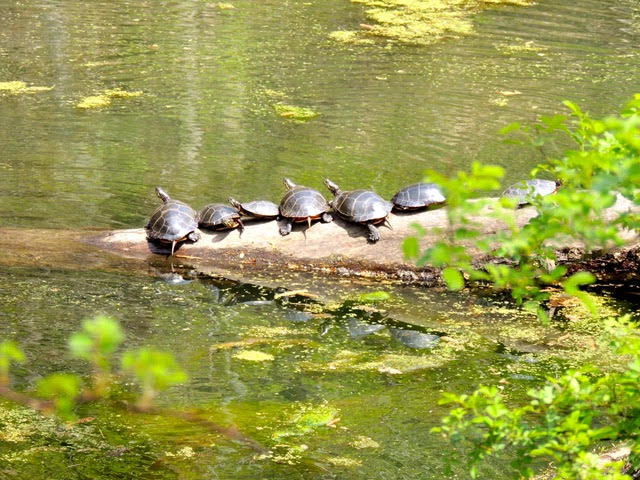
By the gesticulations of the aforementioned woman along the Ausable River, we could tell she was dealing with a customer who was not interested in what she was selling. And by the presence of a rake, we could tell she was dealing with a snapping turtle who, when they are being asked to do something they do not want to do, have a clear way of getting their point across.
Most turtles, when approached, will retreat into their shells. But there is no retreat in a snapping turtle. The recoil from his bite is so ferocious that it will lift the reptile completely off the ground. Not a big deal if you’re a kangaroo, obviously, but for a turtle it really gets one’s attention.
Turtles should never be held by the tail, which causes them serious injury. Of course picking them up too close to their jaws can cause serious injury as well, but not to the turtle. Herpetologists recommend picking up a snapping turtle by the hind legs or the back of the shell, and in my view herpetologists are perfectly welcome to do so. But as we came to the assistance of the woman offering the turtle assistance, I felt that steering him along with a golf club was a safer tactic for both parties.
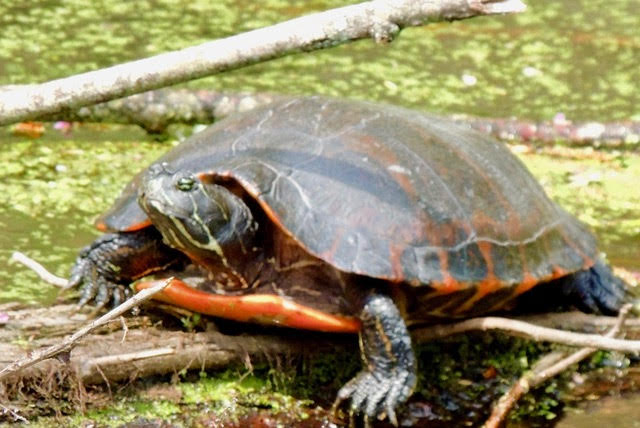
For anyone attuned to nature, the decline of turtles is self evident. When I was little I read Ranger Rick magazine, which taught legions of kids how to feed a turtle on bologna (their subsequent decline might be loss of habitat, but it could just as plausibly be nitrate poisoning), how to put a penny in their water so they would get enough copper, and even how to walk a turtle on a leash made of yarn. On this latter point, even at age 8, I felt Ranger Rick might have gotten into the Schnapps when he came up with it.
But while we could usually count on coming across at least one box turtle on our daily jaunts over hill and dale, today spotting a turtle is less common. The exceptions are the ponds and stagnant water courses where beautiful green turtles by the dozen will emerge onto rocks and fallen limbs, overlapping each other like a plated conga line as they enjoy the spring sun.
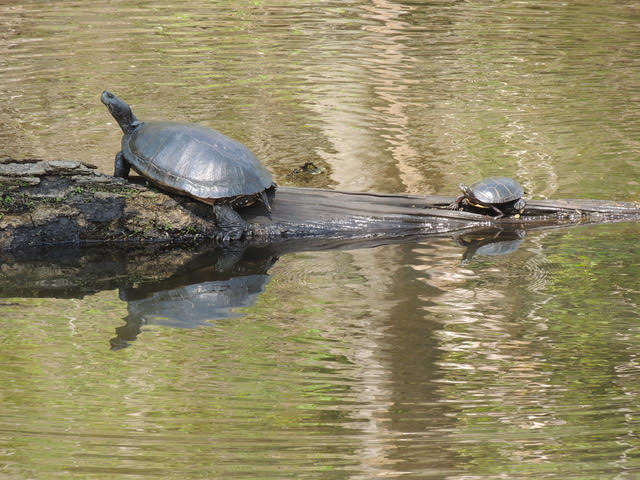
Of the 11 New York species, four live in the Adirondacks. Snappers are particularly vulnerable to cars, as are wood turtles, which lay eggs in sandy shoulders of the highway. With a richly sculpted shell and orange under-markings, it is a beautiful creature, as is the painted turtle, with its red and yellow striping. Rarely seen is Blanding’s turtle, an artful specimen with a big hump for a shell, and whose lacy markings vaguely resemble the doilies at your grandmother’s house, the one who kept plastic on her furniture and collected porcelain chickens.
People speak of Old Souls, but turtles are the ultimate old soul. They gaze at the world with a bland indifference, and if they don’t like the way things are going, they just shut it out. You will not find a turtle with hypertension. Well, snappers maybe, but that’s why they have often ended up in the soup.
Were it able to, a turtle would never be in so much of a hurry that it would not stop to help one of us. So when we reach the place where nothing is of such importance that we can’t stop to help a turtle, we have done a great service to the turtle — but we have done an even greater service to ourselves.
Should you stop to help a turtle as you venture along our Adirondack Coast, you can rest well at any of our lodging properties, or reward yourself with something special from one of our many dining options, knowing you helped preserve a bit of our Adirondack nature.

